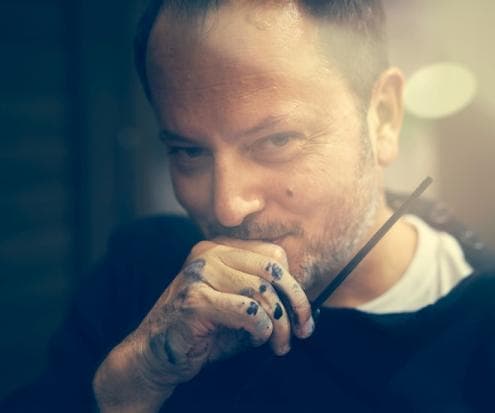
Standing in front of Nicolas Lefeuvre’s artwork, one can’t help but be enthralled by the combination of blue and black strokes—it is reminiscent of a moment when the television is unable to receive a signal. At other times, the paintings also exude a sense of calmness, it’s like one is overlooking the vast ocean during nighttime. That is perhaps the power of art, to transport you to another dimension where you become introspective, conscious and inquisitive.
Ahead is an interview with Nicolas Lefeuvre, one of 11 artists that is part of the INFLUENCERS exhibition, where he sheds light on his creative process and his fascination with… light.
You were born in France (1975) where you studied (Rennes first, then Paris). Very shortly after graduating, you decided to head for a long trip to the Far East. Tell us about this passion of yours for Asia and how it has influenced your art?
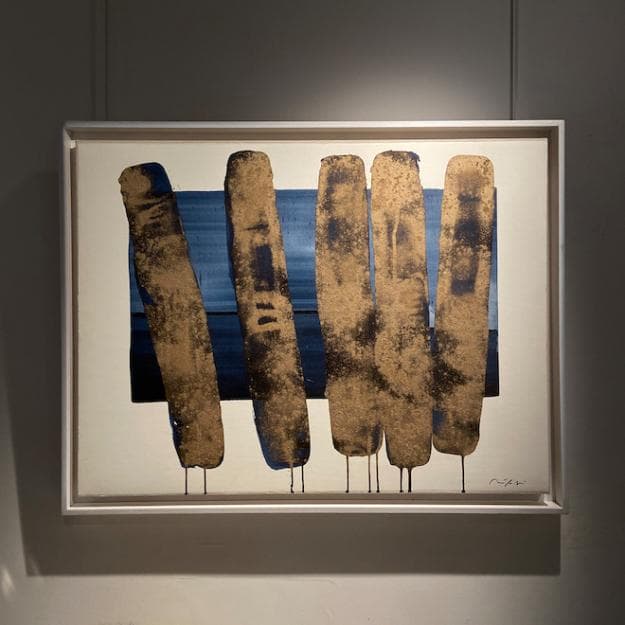
Opening the door of Asia 21 years ago was like opening a door of fairy tales and magical stories… just like living a daydream. All your senses are amplified, stimulated, and I had a feeling that my mind was also getting younger. As a dreamer, Asia became instantly a great playground. Just look at the dawn light, it is unbelievable what you can imagine and create out of it. Asia represents the present moment, it is suspended in time; when the world gives birth to light, it disappears. Then you just need to close your eyes, breathe in, and images will surface, allowing this moment to become eternal. So Asia, for me, is mostly a feeling, and that’s how it has influenced my art.
What did the many years you spent at Chanel as Creative Director brought you as an artist?
Those 15 years with the beautiful house taught me discipline, simplicity and sobriety. Gabrielle Chanel used to say “Before you leave the house, look in the mirror and remove one piece”. Remove rather than add. Working at Chanel also brought a part of femininity to my work and can be seen in the lines and delicateness that I am trying to inject in it. Also, it gave me a passion to value the time used in craftsmanship: I always take time to prepare, I know exactly where I am going when I paint, making my own ink (not ready-made) so I can control my ingredients.
What has been your latest project? And what is planned for you in 2021?
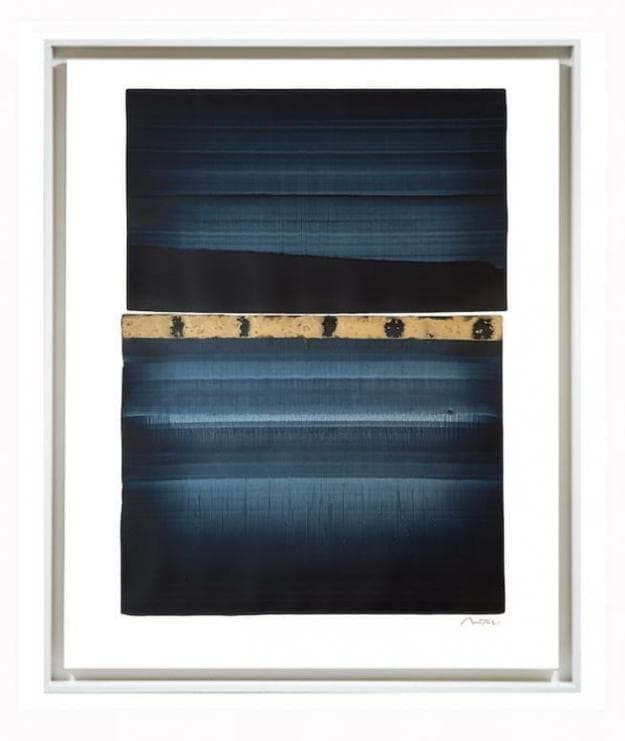
I have been working for a while on the development of a new series called “Self Archaeology” in which I am hiding messages in linen envelopes sealed by embroideries. I am inking the hidden messages on paper with great conscientiousness. It is like a kind of art therapy… Apart from my upcoming series, I have a few exhibitions coming along in Paris, Amsterdam and Hong Kong. I would also like to realise a project that I have started before COVID-19; I am setting up a team to go and give art classes to children in the Zaatari refugee camp located in Jordan, which is the largest Syrian refugee camp in the world.
Your colour palette is mostly composed of deep blue and striking black. What role does colour play in your work?
I would reverse the question here and instead ask what role does my work play on colour? As I am always searching for contrast, light, depth, the colours blue and black (and grey sometimes) are the ones that are the most adapted at translating my emotion. It does not mean I will never use red or another colour but today, I feel more comfortable exploring these two. And they are also the closest to one of my most favourite elements: water.
What type of art materials do you usually work with?
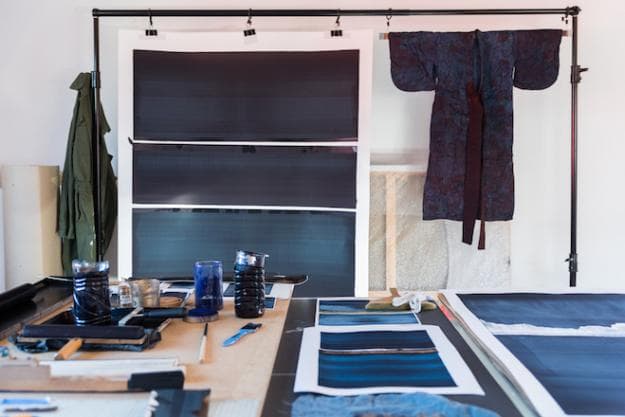
Indigo pigments, metallic gold powder and black ink are the main ingredients I work with. These coloured ingredients will be applied to high-quality cotton fibre paper. Linens and embroideries are also what I love to work with. On the other hand, my tools are not quotidian art tools. I “cook” with objects I found in all the countries I used to live in. Japanese wooden shoes, kimonos, pieces from a loom, from printing machine, spoon, chopsticks, piano keys, tablecloths….
Where do you find inspiration for your work?
Mostly in travelling and in contemplation. The feeling I have during each of my trips conjures a succession of animated images that compiles together to create my own road movie. Skies, clouds, mist, lights, buildings, trains, electrical lines, people, lettering, numbers, sounds… I mentally record everything and have this obsession with going forward.
The constant motion in the air, the ground, seas, plans and depths, all have a hypnotic effect on me, giving me visions and sensations like weightlessness—floating body and mind—with an eagerness for a “great escape”. Childhood is also a great source of inspiration and a great form of art therapy. This is how the upcoming series “Self Archeology” was born.
What emotions do you hope the viewers experience when looking at your art?
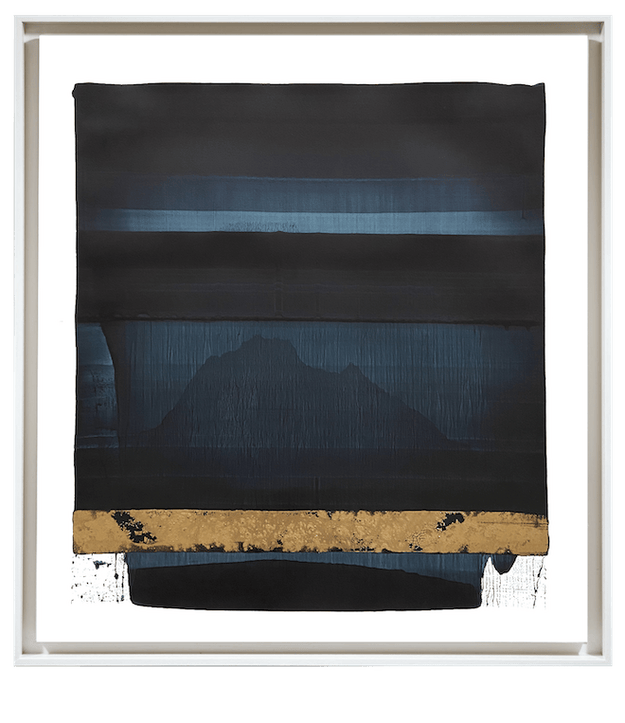
I hope they can be moved and be transported to a different world. A form of escapism, from over connecting. The Land(e)scapes series is for those who daydream: an invitation to discover new territories which can be yours.
What is the role the artist plays in the society?
This is a difficult question. But first, who is to define if he has one or not? Himself? The viewers? Does he have to possess a mission or a role? An artist can be vulnerable; an artist can be engaged. And I think an artist offers possibilities, angles, visions, in order to challenge the status quo. I also like the fact that an artist gathers people, and captivate them.
The five words that describe best your art ?
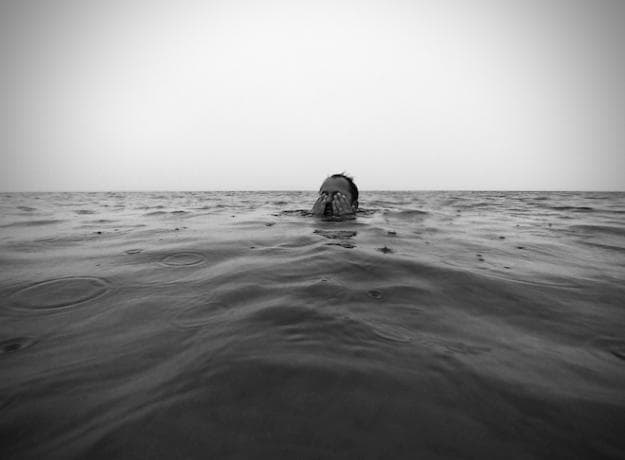
Light, Depth, Mindfulness, Moment and Silence
What can visitors expect to see from you at INFLUENCERS 2021?
I expect them to “feel” more than “see”. I hope they will feel diversity in art, and find links between different periods and movements.
What is your favourite museum in Paris ?
The Antoine Bourdelle Museum, simply because you feel as if you are in his studio. As if Antoine Bourdelle was still working a few minutes ago.
So far what is your most vivid memory of life in Asia (Japan, Hong Kong)?

I do not want to be repetitive, but I think the light would be my most vivid memory of these 20 years spent in Asia. Light is life, light is energy, light is positive. It shows the way. Asia has shown me a way to know myself better.
What is your favourite mantra that you live by?
My father once told me, “Happiness is simple”. I am trying to live following this advice.
If you were to name one mentor who has inspired you in your life and path as an artist, who would that be?
Pierre Soulages is one of them. He said once, “For me, it’s important to experience aesthetic shock, which sets in motion our imagination, our emotions, our feelings, and our thoughts. That’s the purpose of a painting and of art in general”. He managed to sum up the reason why I am dedicating my life to art now, and the importance of opening your heart in everything you do.
Nicolas Lefeuvre’s paintings are currently on display at the Alliance Française (Singapore)
Date: 8 May to 19 June 2021
Time: Monday: closed
Tuesday to Friday: 1:00pm-7:30pm
Saturday: 9am-5.30pm
From 18 to 25 May, please note the following time changes:
– Tuesday 18 – Wednesday 19: 2.45pm-7.30pm
– Thursday 20: 3.15pm-7.30pm
– Friday 21: 1.45pm-7.30pm
– Tuesday 25: 4.45pm-7.30pm
Location: La galerie, Alliance Française de Singapour, 2nd Level
1 Sarkies Road Singapore 258130
For more information regarding this exhibition, you can visit the Alliance Française de Singapour website.
About Nicolas Lefeuvre, @nicolas_lefeuvre
Lives and works in Lisbon, Portugal.
Nicolas Lefeuvre was born in France in 1975. After studying at Beaux-Arts in Rennes (France) and architecture/product design at Camondo in Paris, Lefeuvre left to travel for almost a year all around Asia.
In 2001, he opened a creative studio/gallery in Singapore, doing design, art direction for brands and hosting art exhibitions. In 2008, he became the Creative Director for Chanel which sent him to Tokyo, Japan. After five years in Japan, he moved to Hong Kong with his job, at the same time he started an independent music label in China.
He is now fully dedicated to art, and has exhibited his work from Singapore, Tokyo, Hong Kong, Shanghai and Paris. Lefeuvre works mostly with ink, on paper, using objects, and his work is an invitation through ink sceneries of mental travels.






